I’m a personal trainer — this 3-move bodyweight workout builds full-body strength and boosts your metabolism
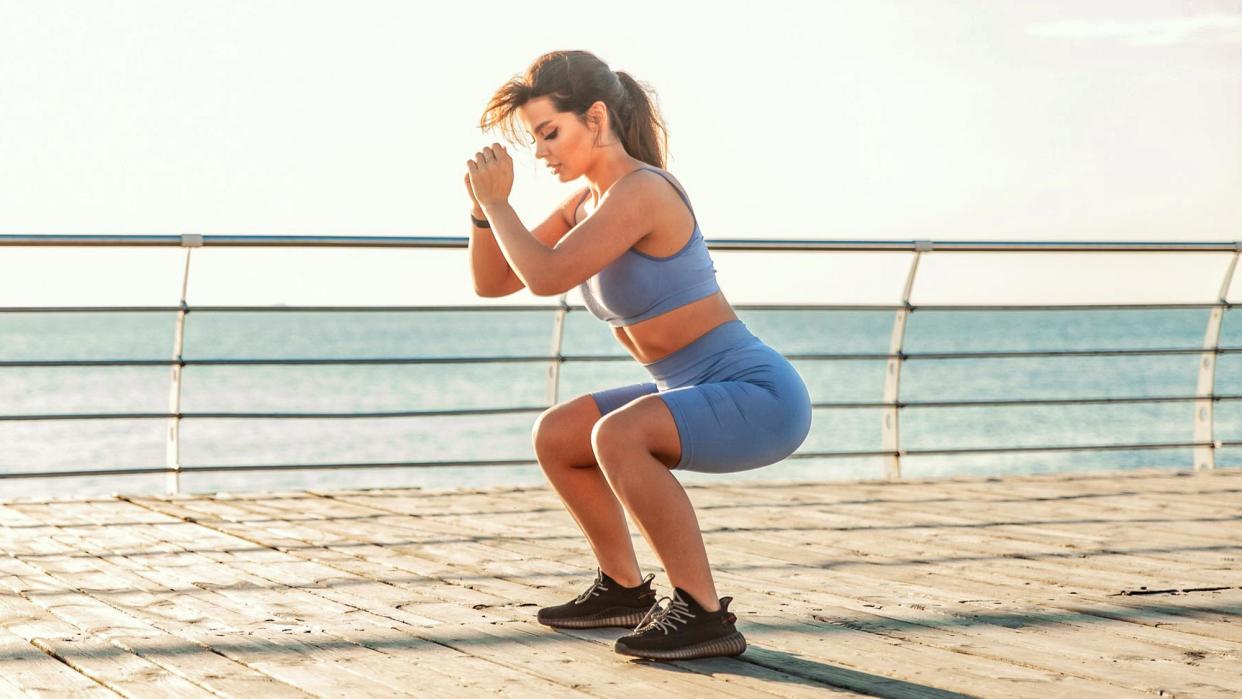
The next time you’re exercising with limited gym equipment or just want to keep it simple with one of the best yoga mats and your body weight, try these three exercises to strengthen your entire body for 20 minutes.
This quick conditioning routine builds strength using power exercises that require explosive movement and rapid-fire contraction of your major muscle groups. It alternatives between upper, lower and full-body work, generating sweat and boosting your metabolism for a short while after you’ve finished exercising, as high-intensity workouts often do.
Anyone can do the full-body workout, but we recommend beginners stick to 15 to 20 minutes of work and scale the exercises if necessary. Those working with an injury, particularly lower back pain or sore joints, should avoid jumping and seek advice from a physician if unsure.
What is the 3-move bodyweight workout?
Set a 20-minute timer. Start with 2 reps of each exercise, then add 2 reps each round. Your reps will follow 2,4,6 and so on. Continue through the reps until you hit 20 minutes. Beginners, reduce to 15 minutes and consider adding 1 rep per round starting from 1.
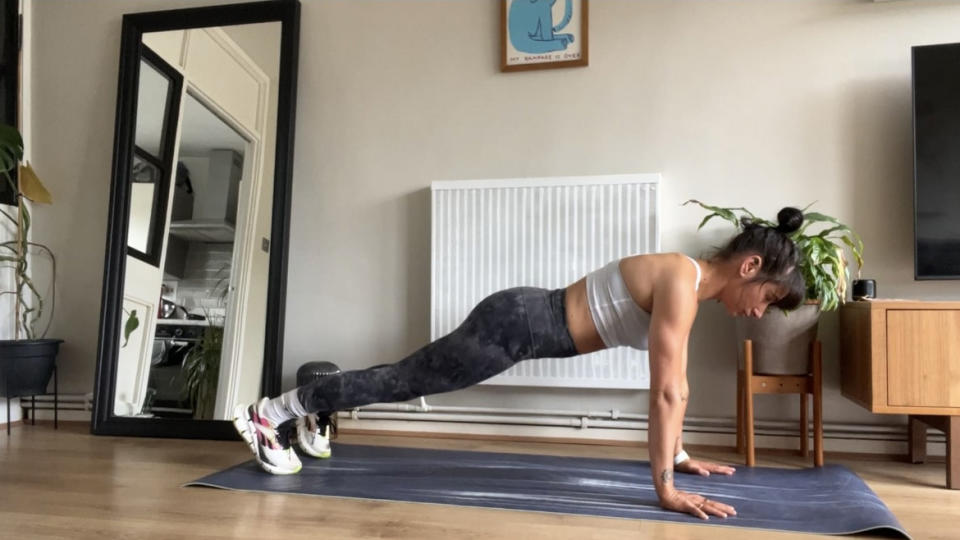
Start in a high plank position ready to perform standard push-ups. Brace your stomach, bend your elbows and lower your chest to the floor. Keep your quads engaged and hips and thighs lifted away from the ground.
Release your hands from the ground, then place them back close to your ribs, Press the ground away and push upward to the starting position. Once you’ve completed your reps, jump forward and stand up, ready to perform burpees.
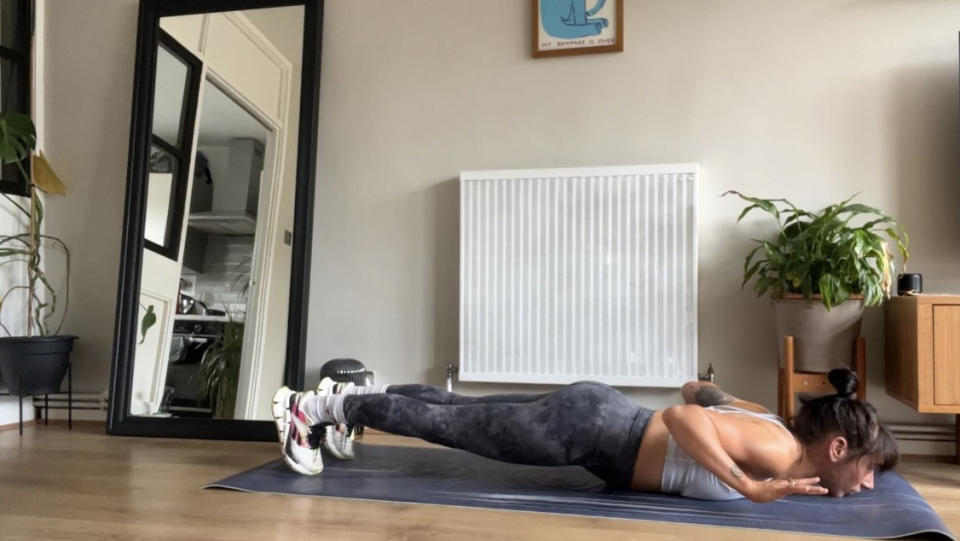
Place your hands on the ground in front of your feet, jump back into a high plank, and lower your chest. Again, keep your thighs and hips lifted and engaged and lift your hands away from the ground, then return your hands down close to your ribs.
Press the ground away as you press upward to a high plank position, jump your feet behind your hands, then jump into the air with your arms raised overhead.
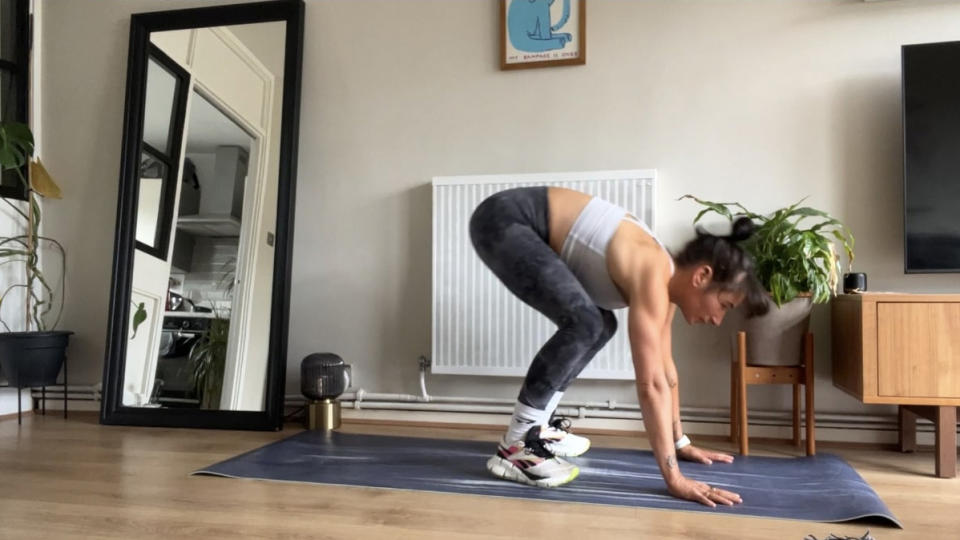
From standing, position your feet hip or shoulder width apart, then lower into a squat, keeping your back flat, spine neutral and chest lifted. Press through your mid-feet and heels and lower until your thighs are at least parallel to the floor, sinking into a deep squat. Jump explosively into the air, ensuring your feet leave the ground and your legs fully extend. Drive your arms downward close to your legs as you jump. Land with your knees bent, lowering straight into a squat again.
Once you’ve completed your reps, move from the bottom of the squat and jump back into a push-up position, ready to start from the top.
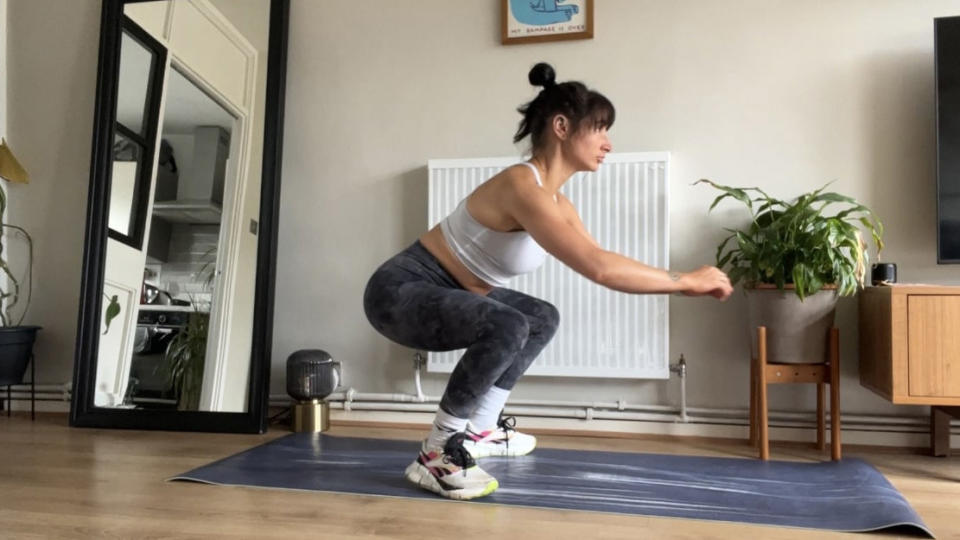
Trainer tips
Each movement requires power — pushing upward from the bottom of the push-up and burpee and jumping upward from the bottom of the squat. Plyometrics training includes explosive movement like sprinting, box jumps, jumping, throwing, or hopping repeatedly and requires your fast-twitch muscle fibers to engage to sustain the rapid movement.
Adding a mix of plyo exercises into your workouts helps train these important muscle fibers while also building power and speed improving overall performance, especially if you enjoy explosive sports like tennis or soccer or anything that requires agility.
You’ll need maximum energy output to perform these exercises with proper form, which can feel more tiring, especially as your fast twitch muscle fibers fatigue faster than slow twitch ones. My advice is to be consistent and avoid rushing through your reps — there are plenty of them waiting for you within the demanding 20-minute time cap.
Take rest as and when you need it but if possible, save rest for between rounds rather than during reps.
Who should avoid plyometric exercises?
The training method can be particularly beneficial for people rehabilitating an injury, however, plyometrics requires maximum intensity and can be high impact, so always check with a qualified physician first, especially if you have an existing injury or illness with contraindications.
I don’t recommend performing these types of exercises every day, but they are effective at boosting strength, coordination, balance, and power over time, especially when mixed into your regular strength training routine; remember to schedule rest days so that your muscles have time to recover and listen to your body at all times, stopping you experience pain.

